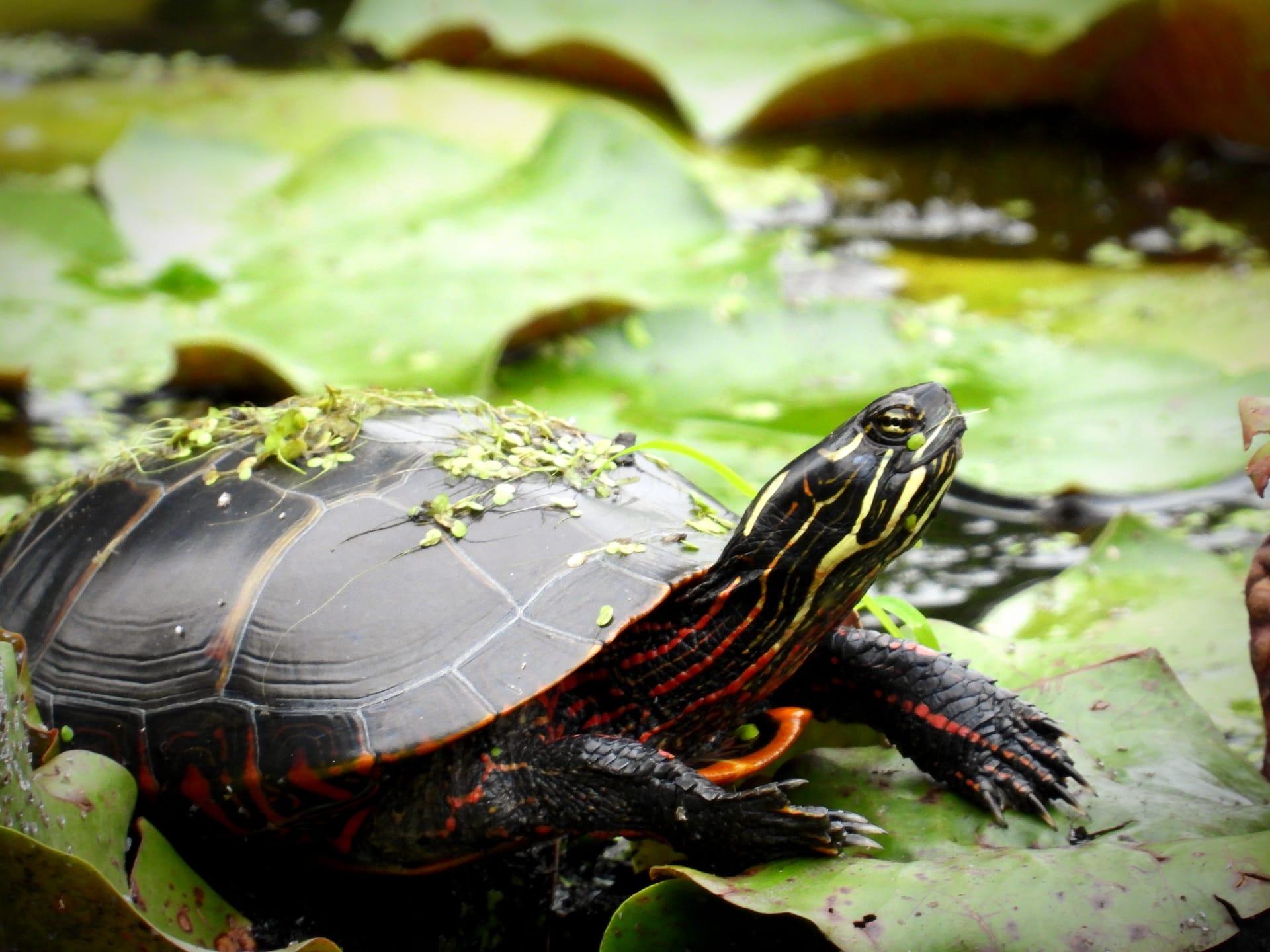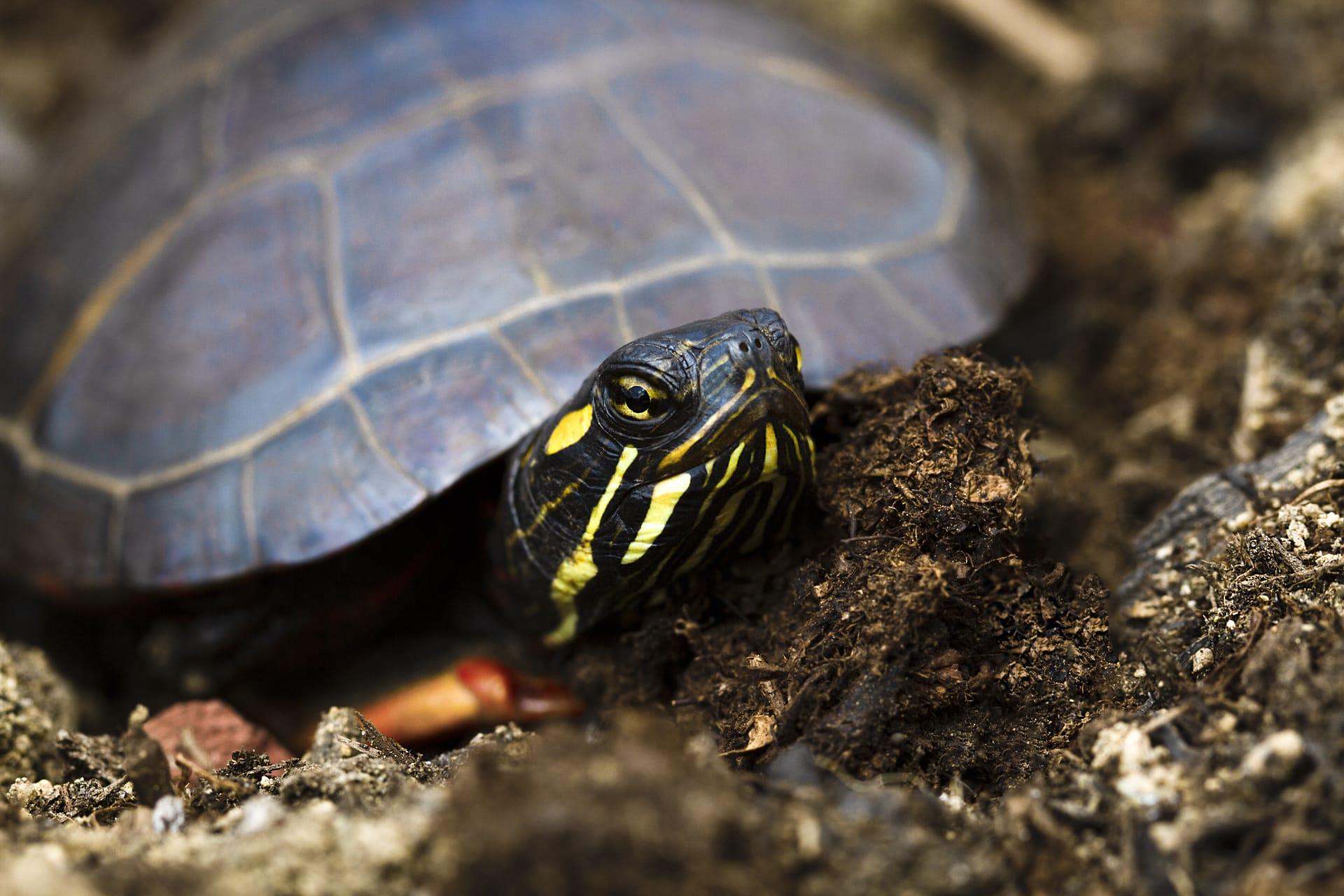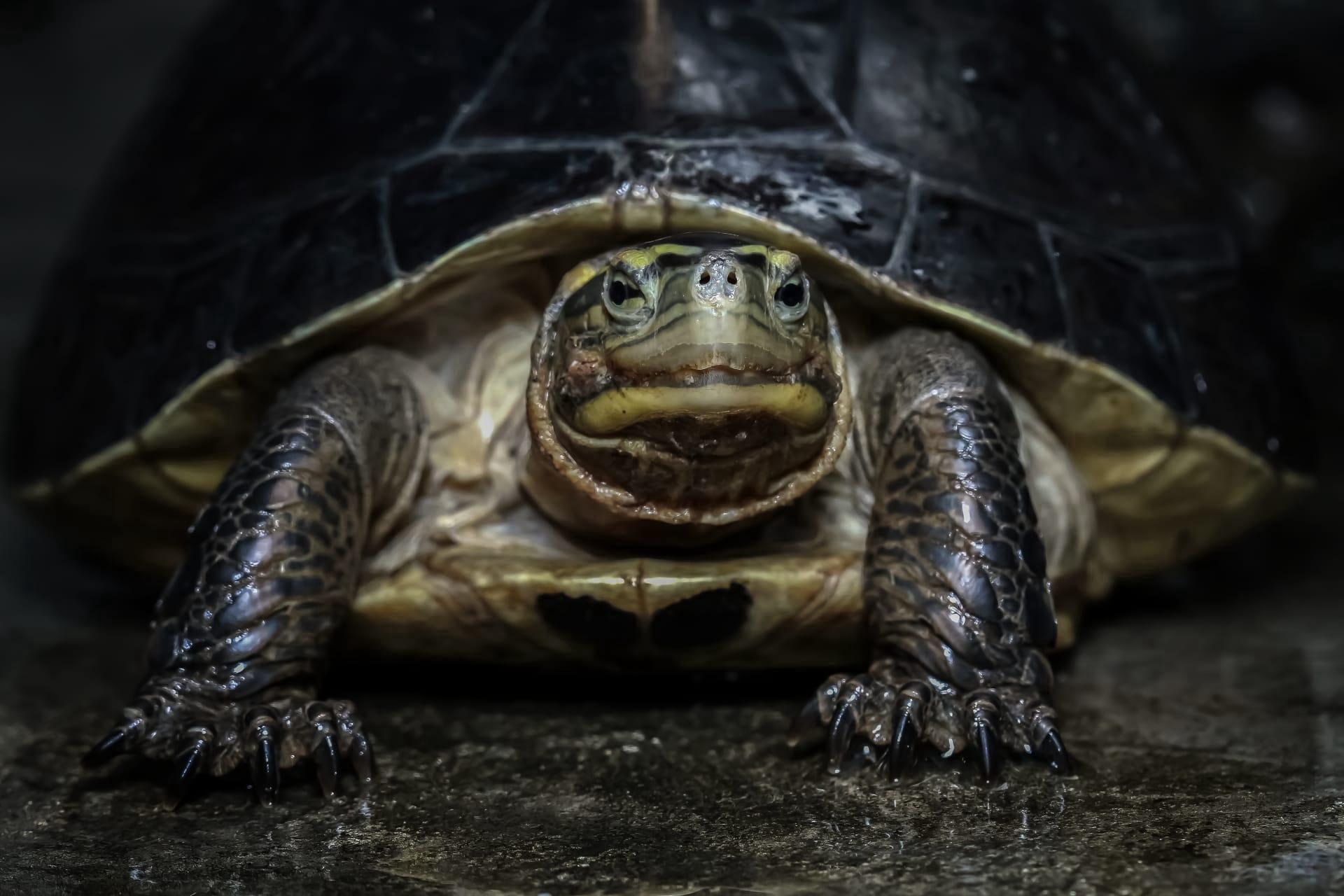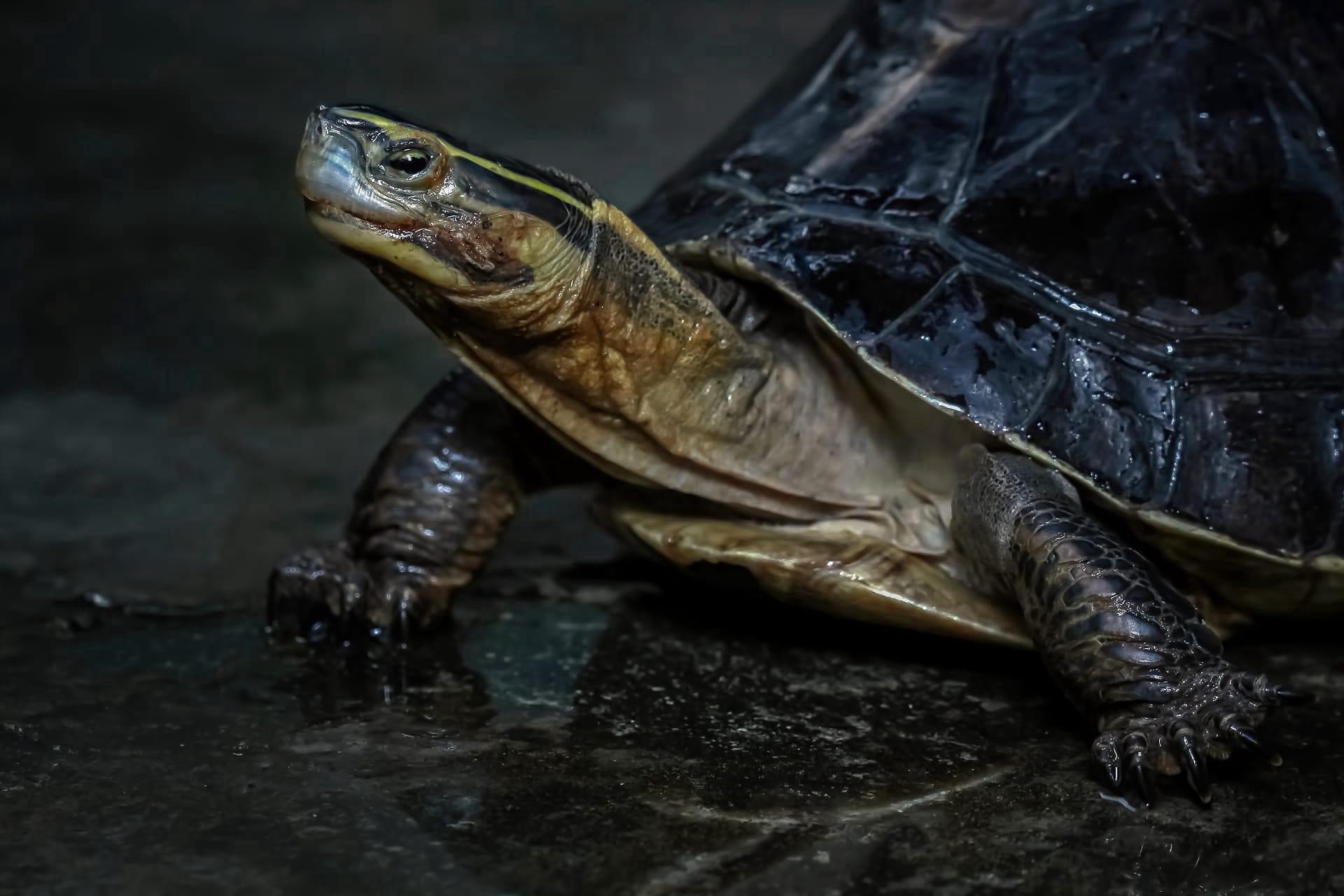Eastern Painted Turtle
- Home /
- Mini Encyclopedia /
- Animal /
- Eastern Painted Turtle
1
The Eastern Painted Turtle, scientifically known as Chrysemys picta picta, belongs to the family Emydidae, which is a large family of turtles. This subspecies is one of the four that make up the Painted Turtle species, the others being the Midland, Western, and Southern Painted Turtles. Eastern Painted Turtles are characterized by their smooth, flat carapaces that have intricate, stripe-like patterns in vibrant reds and yellows. These turtles are relatively small, usually measuring around 5 to 7 inches in shell length.
Native to North America, Eastern Painted Turtles have a widespread distribution, especially in the eastern United States. Their range extends from southern Canada down to the Gulf of Mexico, encompassing a large area of the American Northeast and Midwest. They are commonly found in slow-moving fresh waters like ponds, marshes, and quiet streams. These turtles prefer bodies of water with muddy bottoms and abundant vegetation, which provide essential habitat for foraging and hiding from predators.

2
Question: Do Eastern Painted Turtles spend their entire lives in water?
Answer: It's a common misconception that Eastern Painted Turtles are exclusively aquatic. While these turtles are indeed primarily aquatic, spending most of their time in water, they do venture onto land. Females come ashore during the nesting season to lay eggs, usually in sandy or soft soil. Additionally, both males and females bask in the sun on logs or rocks to regulate their body temperature. This basking behavior is crucial for their thermoregulation and helps in preventing fungal infections on their shells and skin.

3
The Eastern Painted Turtle has developed several survival strategies to thrive in its habitat. One key strategy is their omnivorous diet, which includes aquatic vegetation, insects, and small fish. This diverse diet allows them to adapt to various food availability in their ecosystems. Additionally, they have a remarkable ability to survive in cold temperatures. During winter, they undergo a state called brumation – similar to hibernation – where they bury themselves in mud and significantly slow down their metabolism. This adaptation allows them to survive in frozen ponds and lakes.
Another survival tactic is their vibrant shell coloration, which provides a level of camouflage among aquatic plants and deters some predators. Eastern Painted Turtles are also known for their rapid retreat into their shells when threatened. This defensive mechanism, coupled with their hard shells, offers significant protection against many natural threats.

4
In their ecosystems, Eastern Painted Turtles play several roles that contribute to ecological balance. As part of the food web, they serve as both predators and prey. Their diet helps control the populations of the insects and aquatic vegetation they consume, while they themselves are preyed upon by creatures like raccoons, foxes, and birds of prey. This predator-prey relationship helps maintain a balanced ecosystem.
Furthermore, their foraging habits contribute to the health of their aquatic environments. By feeding on dead material and decaying vegetation, Eastern Painted Turtles help in nutrient cycling and keeping water bodies clean. Their nesting behavior also impacts the terrestrial ecosystems where they lay eggs, as their nesting sites can influence soil composition and vegetation growth.

5
Film: "Turtle Odyssey" (Australia, 2018) – This documentary explores the life journey of a sea turtle named Bunji. Although it primarily focuses on a different species, the Australian sea turtle, it offers insightful glimpses into the challenges and wonders of turtle life, which are relevant to understanding turtles like the Eastern Painted Turtle.
Book: "North American Turtles: Biology and Conservation" (United States, 2001) by Carl H. Ernst and Jeffrey E. Lovich – This book provides a comprehensive overview of turtle species in North America, including the Eastern Painted Turtle. It covers aspects like their biology, habitat, and conservation efforts, offering valuable insights into these fascinating creatures.
Book: "Life in a Shell: A Physiologist's View of a Turtle" (United States, 2011) by Donald C. Jackson – Focusing on the physiological aspects, this book delves into how turtles like the Eastern Painted Turtle have adapted to their environments. It covers topics like shell structure, thermoregulation, and survival strategies, providing a unique perspective on turtle biology.